Bayer R.G. Mechanical Wear Fundamentals and Testing, Revised and Expanded
Подождите немного. Документ загружается.

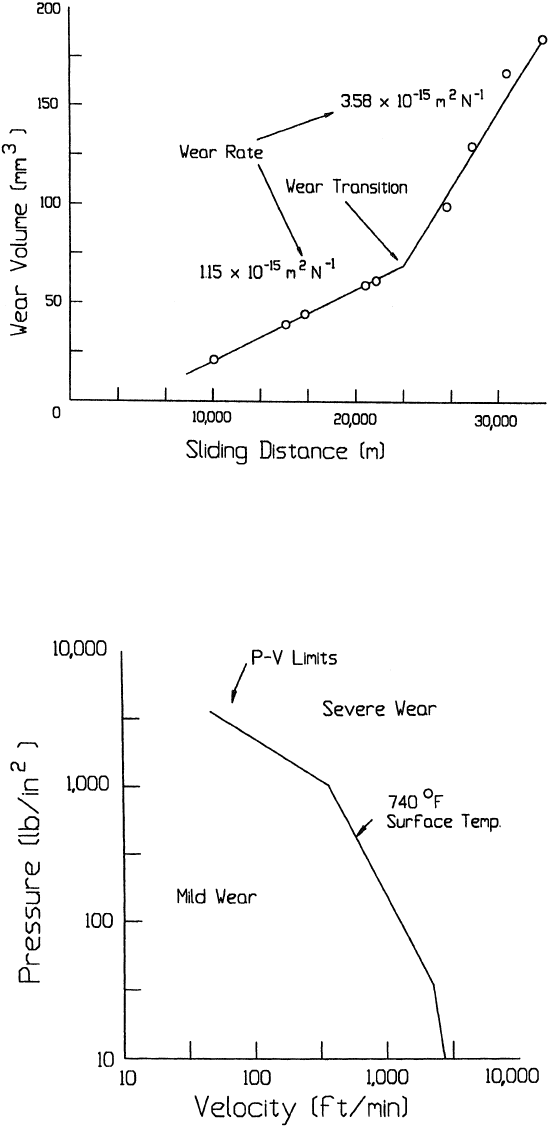
Figure 4.35 Wear behavior of polyimide sliding against a steel counterface. (From Ref. 23.)
Figure 4.34 Transition in plastic wear behavior as a result of disruption of third-body film (unlu-
bricated sliding between UHMWPE and steel. (From Ref. 16.)
Copyright 2004 by Marcel Dekker, Inc. All Rights Reserved.
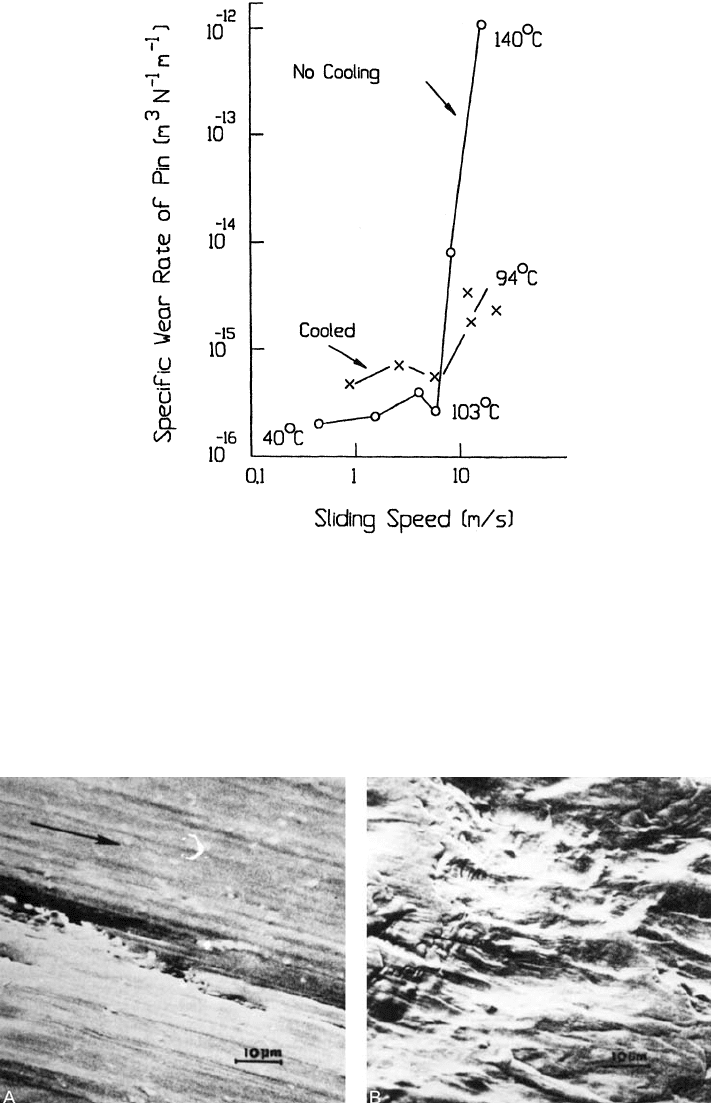
temperature. A similar transition for another polymer is indicated as a function of sliding
speed in Fig. 4.36. The appearances of the polymer wear scar above and below this type of
transition are different, as shown in Fig. 4.37. Above the transition, the morphology indi-
cates the occurrence of softening and flow. The relationship between temperature, load,
Figure 4.36 Wear behavior UHMWPE sliding against steel with and without cooling. (From
Ref. 16.)
Figure 4.37 Examples of polymer wear scar morphology below (A) and above (B) the mild=severe
wear transition in the case of sliding. (From Ref. 97, reprinted with permission from ASME.)
Copyright 2004 by Marcel Dekker, Inc. All Rights Reserved.
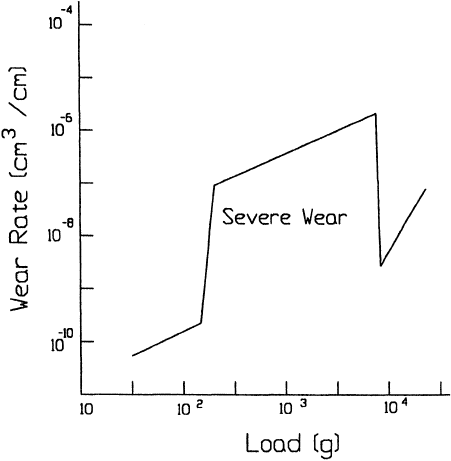
and speed in this type of transition can be understood by recognizing that the product of
the pressure and velocity is proportional to the energy dissipated at the sliding interface,
which determines the surface temperature.
Metal and ceramic sliding systems also exhibit similar transitions related to tempera-
ture, load, and speed, as well as relative humidity. In general, these are usually associated
with the formation of various oxides and films on the surface (5,13,14,24,33,50). Examples
are shown in Figs. 38–42. Surface analysis techniques, such as micr oprobe, Auger and
ESCA analys is have confirmed the existence of different ox ides and films in these regions.
The wear on one side of the transition is usually mild, while, on the other side, severe. Fre-
quently, wear rates are found to change by as much as two or ders of magnitude in these
transitions.
Transitions can also be associated with stress levels. For example, in the case of the
impact wear of thin polymer sheets, a stress limit has been identified with the transition
from mild to a severe wear region (3,41,51). Above this limit, an over-stressed condition
exists and the film experiences catastrophic wear. An example of the wear in this region
is shown in Fig. 4.43. A much milder form of wear occurs below that limit. In this region
of mild wear, further transitions can also occur. An example of this is the impact wear
behavior of elastomers (51). During the initial period of wear, the elastomer progressively
deforms, asymptotically approaching some limit of deformation. After a certain point,
crack formation becomes evident and there is loss of material from the surface. The
appearance of the wear scar before and after this transition is shown in Fig. 4.44, along
with a graph of typical wear behavior below the critical stress. For materials, which have
an elastic region and a plastic region, it is also common to find different wear behavior for
loading conditions in the elastic range as compared to those in the plastic range. Fre-
quently, severe wear behavior is associated with wear in the plastic situation. An example
Figure 4.38 Transitions in the sliding wear rate for an unlubricated steel=steel couple, associated
with changes in oxide structure. (From Ref. 9.)
Copyright 2004 by Marcel Dekker, Inc. All Rights Reserved.
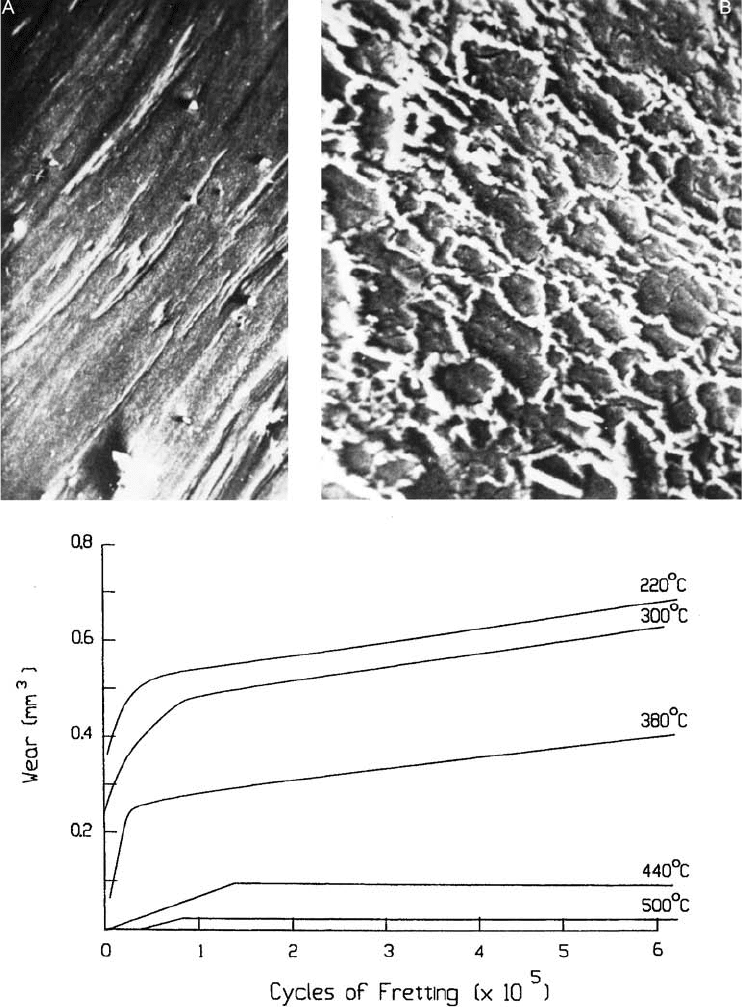
Figure 4.39 Differences in fretting water behavior of an unlubricated metal couple as a result of
changes in oxide formation. The graph shows the influence of temperature on wear rate. The two
micrographs illustrate the differences in wear scar morphology that can occur as a function of tem-
perature. ‘‘A’’ is the condition after 120,000 cycles at 500
C; ‘‘B’’, 168,000 at 600
C. Wear was much
lower at the higher temperature. (From Ref. 24, reprinted with permission from Elsevier Sequoia
S.A.)
Copyright 2004 by Marcel Dekker, Inc. All Rights Reserved.
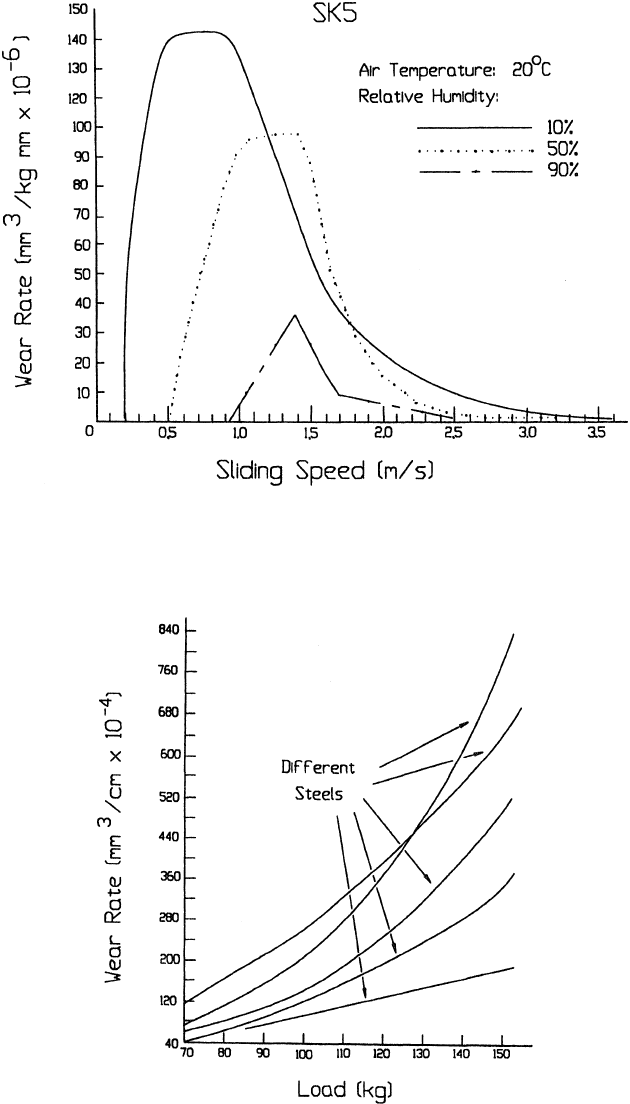
Figure 4.40 Wear rates of cast iron sliding against steel for different humidity conditions and with-
out lubrication. (From Ref. 13.)
Figure 4.41 Wear rate as a function of load for different steels sliding against a steel counterface
without lubrication. (From Ref. 5.)
Copyright 2004 by Marcel Dekker, Inc. All Rights Reserved.
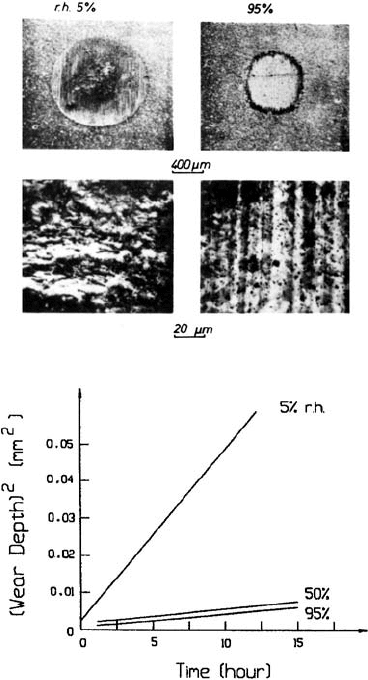
of this is shown in Fig. 4.45. A wear scar, representative of the milder wear beha vior gen-
erally found in elastic situations, is also shown in the figure for comparison. These suggest
that the relative contributions from the various wear mechanisms are different above and
below the yield point. Typically, single-cycle deformation and adhesion would tend to
predominate at stress levels above the yield point (52).
A further example of a transition in wear behavior is shown in Fig. 4.46. In this case,
the initial wear rate is low but with an increased number of operation s, a dramatic increase
in wear rate is seen. Examination of the wear scars in the two regions suggests that adhe-
sion becomes more pronounced in the region of accelerated wear. Prior to this, several
changes in the surface features were observed. One was that the surface became smoother,
which contributes to increased adhesion. Discolorat ion of the surfa ce was also observed to
increase, suggesting increased surface temperature, which again would enhance adhesion.
Wear tests with the same material system under similar stress conditions but at a much
lower sliding speeds resulted in wear behavior which could be correlated with the initial
Figure 4.42 Wear of SiC fretting against unlubricated 52100 steel for different relative humidity
conditions. The micrograph graphs show the wear scar morphologies occurring under very dry
and very moist conditions. (From Ref. 50, reprinted with permission from ASME.)
Copyright 2004 by Marcel Dekker, Inc. All Rights Reserved.
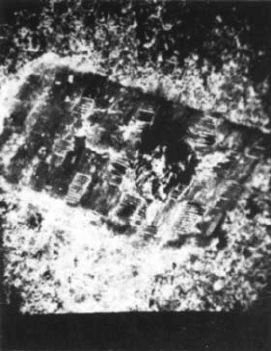
wear behavior in the application. It was concluded that the high sliding speed in the appli-
cation was a significant factor in the surface modification that initiated the accelerated
wear behavior. Several material systems were tried in this application. All the metal=metal
metal and metal = ceramic systems tried exhibited this type of transition; metal=polymer
systems did not but had wear rates well above the initial wear rates of these other syst ems.
Changes in the degree or amount of lubrication provided to a sliding or rolling sys-
tem can also lead to transitions in wear behavior. The wear behavior as a function of
amount of lubrication is shown in Fig. 4.47. In this case, the appearance of the wear scars
looked similar in both regimes. However, there is often a significant difference in wear scar
appearance of a well-lubricated surface and a poorly lubricated one. Typically, this is the
result of the wear changing from mild to severe between these two conditions.
A further example of a transition in wear behavior is shown in Fig. 4.48 for a lubri-
cated metallic system under combined rolling and sliding. There is a transition from mild
to severe wear as a function of load and speed, analogous to PV behavior, and the transi-
tion is associated with oxide formation, softening of the metal, and lubricant rheology.
The inset in the figure illustrates wear scar morphology on the two sides of the transition.
Frequently, the wear above the transition in such a situation is referred to as scuffing.
Transitions in wear behavior can generally be associated with changes in the appear-
ance of the wear scar and frequently in the nature of the debris that is produced (44,53). In
addition, as will be further discussed in the section on friction, changes in frictional beha-
vior are often associated with transitions in wear behavior. These two attributes, morpho-
logy and friction, are often key in identifying and understanding these transitions and
observations regarding these are useful in engineering evaluations.
4.5. GALLING
Galling is a severe form of adhesive wear that can occur with sliding between metals and
metals and ceramics. Localized macroscopic rou ghening and creation of highly deformed
Figure 4.43 An example of ‘‘overstressed’’ impact wear behavior of polymer films. In this case, the
film was a urethane coated fabric impacted by a steel hammer. (From Ref. 3, reprinted with permis-
sion from Elsevier Science Publishers.)
Copyright 2004 by Marcel Dekker, Inc. All Rights Reserved.
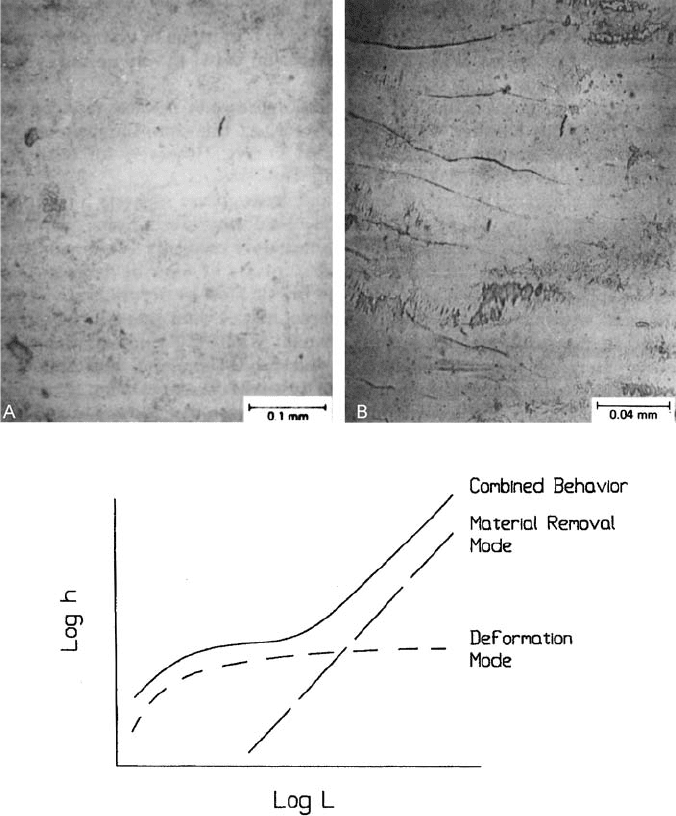
protrusions, resulting from adhesion and plastic deformation, are distinguishing charac-
teristics of this wear mode. Examples of galling and galls are shown in Fig. 4.49. This type
of wear is generally limited to unlubricated tribosystem, unless there is a breakdown with
the lubrication. Galling is stress dependent, increasing with increasing stress. A minimum
contact pressure is required for galling to take place (13,14). This minimum pressure
depends on the material pair, as well as on parameters that affect adhesive wear behavior.
The severity of the galling also depends on ductility. Galling tends to be more severe with
ductile materials than with brittle materials.
Figure 4.44 Impact wear behavior of elastomers. The micrographs show the initial (‘‘A’’) and long-
term (‘‘B’’) appearances of the elastomer surface. (From Ref. 51, reprinted with permission from
Elsevier Sequoia S.A.)
Copyright 2004 by Marcel Dekker, Inc. All Rights Reserved.
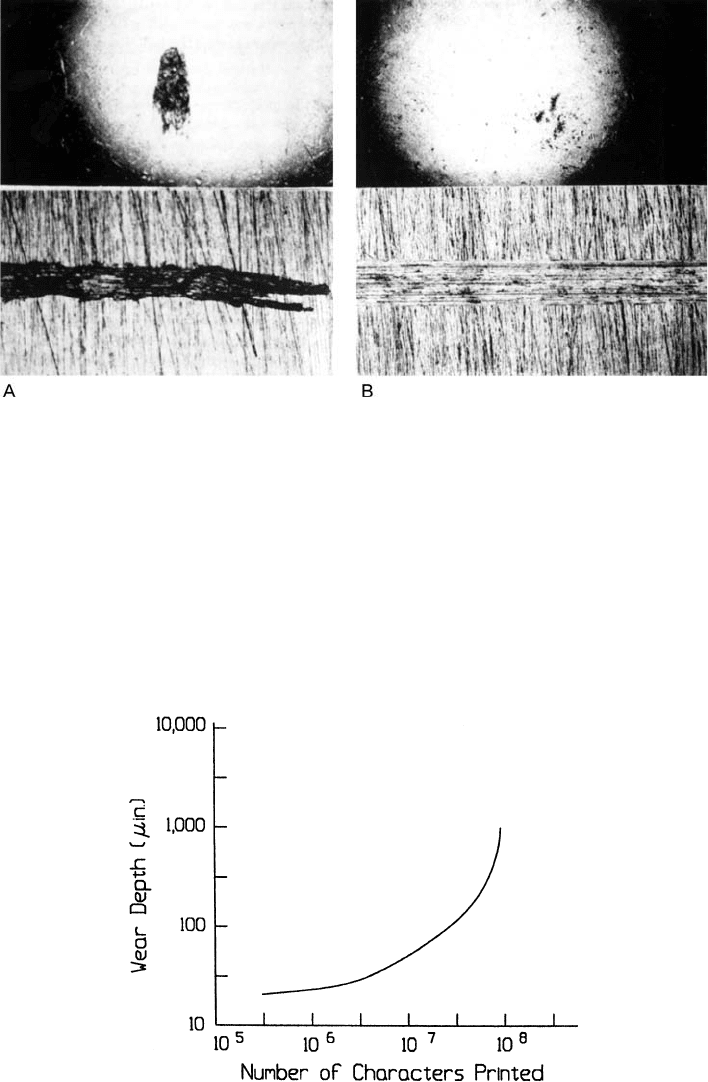
The minimum contact pressure required for galling to take place is called the galling
threshold stress. This threshold stress characterizes resistance to or susceptibility for gal-
ling between a pair of materials. Threshold stresses are generally determined in tests invol-
ving a single unidirectional rubbing action and examining the surfaces for evidence of
galling. There is an ASTM (American Society for Testing and Materials) International
standard test method, ASTM G98, for determining galling threshold stresses, which uses
Figure 4.45 An example of severe wear behavior in a metal–metal sliding situation, when the elas-
tic limit is exceeded, is shown in ‘‘A’’. ‘‘B’’ shows an example of milder wear when this limit is not
exceeded. (From Ref. 52, reprinted with permission from Elsevier Sequoia S.A.)
Figure 4.46 Wear behavior on an unlubricated stainless steel print band and a Cr-plated steel pla-
ten. Wear depth is measured behind the location of a character and results from sliding at this inter-
face during printing.
Copyright 2004 by Marcel Dekker, Inc. All Rights Reserved.
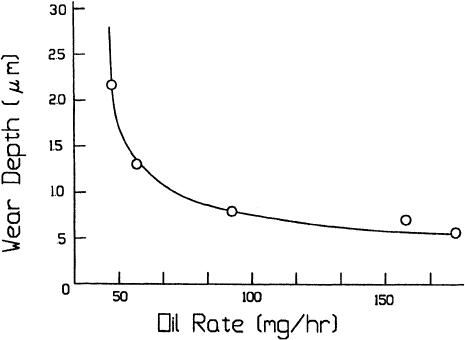
a single 360
rotation of a flat button pressed against a flat surface. A description of this
test can be found in Sec. 9.2.9. Threshold stresses can also be determined using other
methods (54–57). A tabulation of galling threshold stresses determined by such tests can
be found in the appendix.
Surface changes caused by wear can affect susceptibility to galling. For example,
changes, such as removal of pr otective layers and growth of the real area of contact with
increased rubbing, are likely factors for lowering threshold values. There is evidence that
such effects can be significant and lower threshold values when there is repeated contact.
This is illustrated by the data shown in Table 4.1, where threshold values based on a single
rotation and three rotations are listed.
The susceptibility to galling is also affected by surface roughness (54,56). Generally,
increased R
a
or center-line-average (CLA) roughness decreases the tendency for galling.
This is shown in Fig. 4.50, where threshold values for a stainless steel–steel couple is
plotted as a functio n of roughness. Extremely smoot h surfaces, that is, R
a
< 0.25 mm,
should be avoided. The tendency for galling can be affected by other aspects of surface
roughness as well. Long-wavelength waviness tends to promote galling by localizing the
contact. Galling tends to be most severe when there is a lay to the surface that is perpen-
dicular to the sliding motion and least when the lay is parallel. A surface without lay, such
as produced by grit blasting, is somewhere in-between. This influence of lay is caused by
the effect that the lay has on the growth and size of junctions.
Material pairs, hardn ess, and ductility are also factors in galling behavior (56).
Rankings of various metal combinations in terms of their suscept ibility for galling are
shown in Table 4.2. Hardness and ductility, through their effect on junction size and
growth, are factors in galling. Higher hardness and fracture reduce the size of junctions.
As a consequence, the severi ty of galling tends to be reduced by increases in hardness,
reduced ductil ity, and brittle behavior. Galling thresholds tend to be high and galling
mild for material couples that have these characteristics. Many surfa ce ha rdening treat-
ments provide all three attributes. Figure 4.51 illustrates the change in galling behavior
that resulted from nitriding two stainless steel surfaces.
Figure 4.47 Wear of a steel=steel interface, subjected to combined impact and fretting, as a func-
tion of oil supply. (From Ref. 12.)
Copyright 2004 by Marcel Dekker, Inc. All Rights Reserved.
